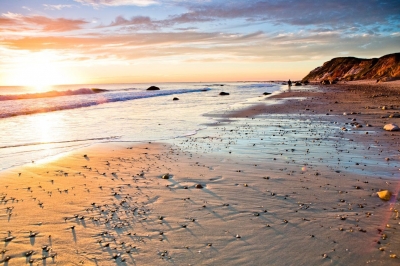
All around the world the sea rises and falls twice a day at high and low tide. It happens at different times in different places, and the times of high and low tides change from one day to the next. The difference between high tide and low tide ranges widely. The Mediterranean Sea has hardly any tide at all. Over on the other side of the Atlantic the tide in the Bay of Fundy in eastern Canada rises as much as sixteen metres.
What causes all this water to rise and fall? The sun and the moon do. They both have forces of gravity that pull on the earth’s water. The result is that two bulges’ are produced in the earth’s oceans at opposite sides of the globe every twenty four hours. Since the moon is closer to us than the sun, its gravitational pull is greater. For two periods every month the rise and fall of tides is greater than usual. These are known as spring tides, although they happen all year round, not just in spring. Spring tides are caused by the moon, sun and earth forming a straight line. The gravitational pull of the sun is added to that of the moon when this happens, and the pull on the tides is greater.
At two other times in the month the opposite happens. The sun, moon and earth form a right angle in which the sun’s gravitational pull partly wipes out the moon’s. As you might expect, the overall pull is smaller when this takes place. So the difference in tides is smaller too. This is when high tides are at their lowest and low tides are at their highest. Under these conditions the tides have a special name too. They are called neap tides.
Picture Credit : Google




